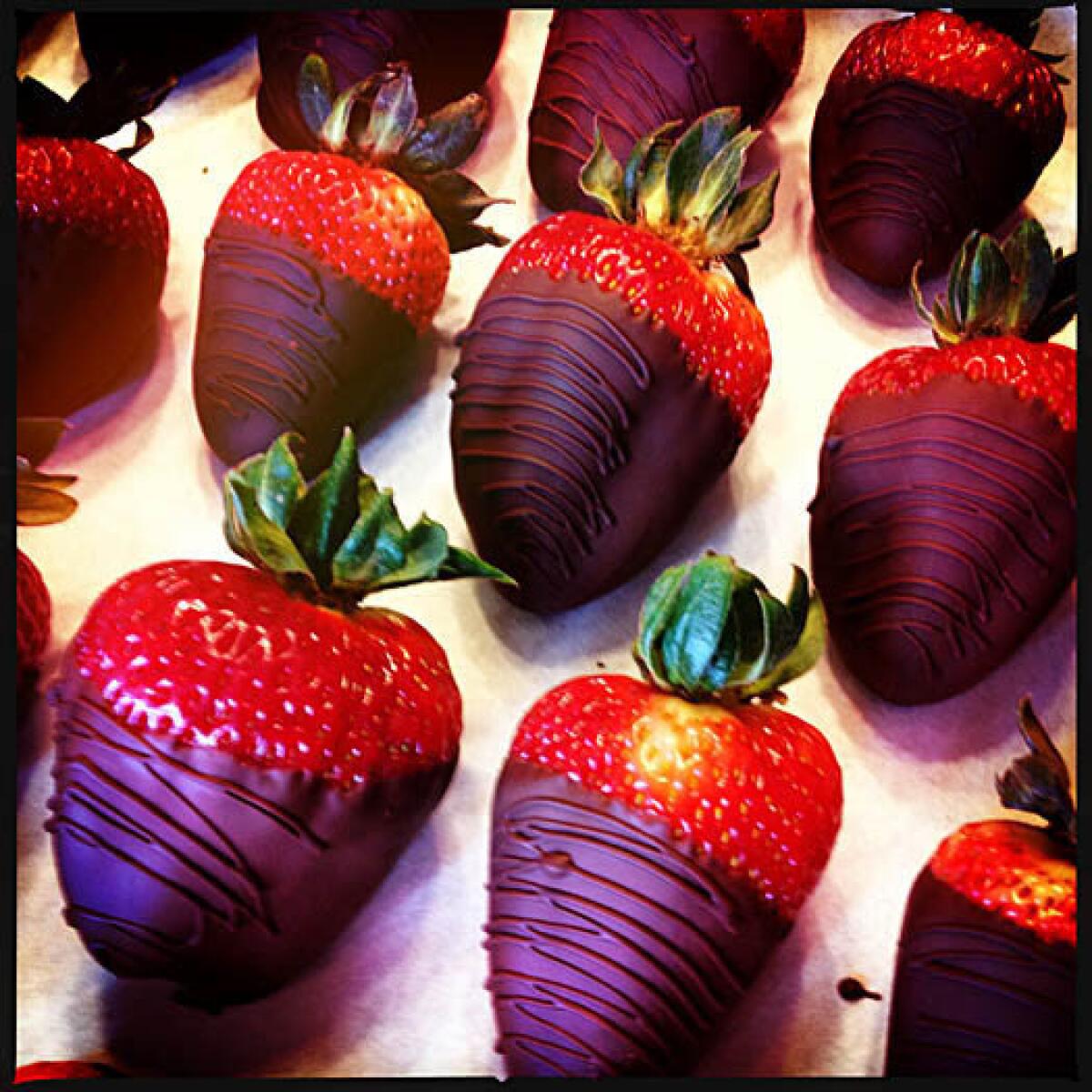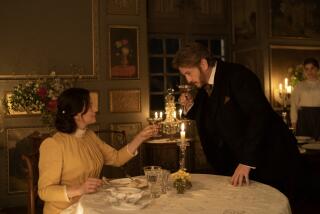Food photography 101: Framing food with your phone

- Share via
This is part of a series of posts on food photography, sharing some of the tips and tricks we use here at The Times. We received a number of great questions from readers, which we will answer in upcoming posts. Here, photographer Robert Lachman tackles a type of camera we’ve probably all used to shoot food: the camera phone. -- Noelle Carter
When I first started in photography, taking great photos of food necessitated the use of an expensive large-format camera and lighting. Today, professional photographers still use expensive DSLR (digital single-lens-reflex) cameras and lighting to photograph food for magazines, newspapers and websites.
But when you think about it, cellphones take most of today’s food photographs.
I am willing to guess about 99.9%. This isn’t data from a scientific study, all you have to do is look around. Websites like Facebook or Instagram are flooded with food sometimes shot before anyone has taken their first bite. I have shot thousands of food photographs with my iPhone and there seems to be no end in sight.
Did I forget to mention all the cool effects you can add on a phone: frames, scratches, vintage filters, or perhaps turning it into an artist square at the touch of a few buttons? It’s this kind of variety that changes the playing field.
It’s almost too easy.
Here are a few simple tips to increase your odds of shooting a better food photograph. We’ll explore them in more depth in later posts.
Background - One of the easiest ways to improve your photos is to incorporate the background or other items at the table in a creative way. Move in close for your first shot. It’s always nice to have a tight shot. As you start to pull back, check the screen to see what elements you can include. Are they improving your image?
The instant results you see on the phone are so much easier than the good-old-days of having to shoot test Polaroids, or just guessing and hoping for the best.
Next, consider changing your angle or turning the plate to get a better look at the food. There are no hard and fast rules here -- give the camera a slight turn, artistic photos need a tilt. Also, remember, a lot of the cell phone apps like Instagram are going to crop your photo into a square.
Finally, try to remember the reason you came to the restaurant in the first place, before you turn this into a full-blown photo shoot. Try to respect your friends at the table, along with other diners there to enjoy the eating experience. Think before you shoot. There will be plenty more opportunities. If you’re in a quiet location consider turning the sound off. Your phone camera doesn’t need to make noise.
When shooting at home, take your time and shoot lots of photographs. This is a great time to experiment: Moving to a bright location in the kitchen will increase your odds, especially if you want sharp images. Hold steady as you fire, pressing the exposure button gently. Moving the camera as you take the photograph will result in a blurry image. Finally, consider dressing up the image with other props: napkins, fancy utensils, a wine glass, candles or a cup of coffee.
Lighting - When it comes to photography, lighting is king. Today’s top cellphone cameras do an amazing job considering the size of the camera. It’s not as good as a compact point-and-shoot or DSLR camera, but as the saying goes, “The best camera is the one you will carry with you.”
The cellphone flash is probably the weakest link. Most dining rooms, kitchens and restaurants are plenty bright enough. If you need to break out the cellphone flash, chances are your success will be limited. Try to refrain from being a paparazzi with your food, especially in a dark, quiet restaurant.
When shooting at home, look around for unusual patterns of light from a window to add a dramatic look. If you’re shooting during the day, experiment by turning the room lights on and off to see if the available lighting might give you the mood you’re looking for.
Again, shoot tight, pull back for a medium shot, then get the table and finish with an overall of the room.
Archive - Remember you may want to use some of these photographs at a later date. Lots of these photos might also include friends or relatives.
Archiving and backup strategies are topics no one wants to hear about, but it’s important to keep your photos organized just like you would with an expensive camera. Back up those photos to a computer, hard drive or the cloud. I know it’s extra work, but you’ll appreciate it later on.
Robert Lachman started at The Times as an intern in 1974 and has been a staff photographer and photo editor for 38 years. He’s covered the Olympics, World Series, Super Bowls, Stanley Cup championships, presidential elections, natural disasters, the Academy Awards and other events. He has taken celebrity portraits, but he also enjoys photographing people from all walks of life. Lachman’s award-winning work has appeared in national publications, including Time and Newsweek magazines, and he has lectured at UCLA, USC, Chapman University and UC Irvine.
Questions or suggestions? Food photography challenge? Comment below or email Noelle Carter at noelle.carter@latimes.com.
ALSO:
Go behind the scenes at the Test Kitchen
Browse hundreds of recipes from the L.A. Times Test Kitchen
More to Read
Eat your way across L.A.
Get our weekly Tasting Notes newsletter for reviews, news and more.
You may occasionally receive promotional content from the Los Angeles Times.











